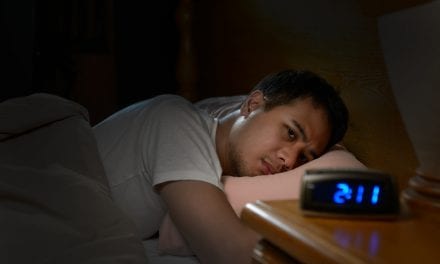Through non-linear conversion of activity to inactivity, researchers have discovered how to capture detailed information on human sleep cycles outside the lab.
In a recent study, researchers discovered a way of documenting human sleep cycles over significant periods of time with hundreds of people using simple wrist-worn actigraphy devices, also known as actimeters, and analyzing the data in a novel way.
The study, published in the journal Current Biology, collected actigraphy data from 574 people over a span of more than 200,000 days. After finding the activity data to be subpar in distinguishing sleep cycles when compared to in-lab devices, the team decided to measure sleep inactivity instead.
“We found that the residual tiny bit of activity is hardly visible when we plot the data. So, we thought that since we were focusing on activity during the wake period, we should focus on inactivity during sleep,” says Till Roenneberg, PhD, lead author of the study. “We’re now measuring the structure of sleep via different levels of inactivity,” he says. To collect inactivity data, the team used a conversion to measure the inactivity on a scale of near 0 (active) to 100 (inactive)—the researchers call this measure “locomotor inactivity during sleep,” as opposed to the measurement of locomotor activity.
So what does this mean for the future of sleep tracking? Roenneberg says the possibilities give an insight into the context of sleep over a period of time with thousands of people. “We’ve shown that if the movement is treated with the right algorithm, we can get a sort of glimpse into the temporal structure of sleep. By applying these new methods, we will hopefully somehow get to a notion of how to measure sleep quality objectively.” This notion, he adds, is the goal of this research.
Roenneberg and his team are hoping to ultimately use this new data to conjure more objective ways of measuring not just sleep activity/inactivity, but also quality of sleep. “We’ve shown that if the movement is treated with the right algorithm, we can get a sort of glimpse into the temporal structure of sleep,” he says.
He hopes to one day be able to provide anyone, in any environment, the ability to track their sleep and receive feedback to improve their quality of sleep. He says, “My dream is to develop a platform with a really big database computer. So, every person in the world who could afford the actimeters can upload their data to our database and automatically get a response back. If I could create this database of objectively measured activity in sleep, then I could ask patients questions that nobody has been able to ask before.”
He warns, however, that he doesn’t mean they would get the detailed measurements you can get with in-lab polysomnography equipment, as others have claimed they are trying to do. “But still, we have opened up the possibility for everyone to be able to track their sleep cycles,” he says.
These new findings suggest a shift in the way sleep specialists will address sleep problems across every patient population. As data and feedback becomes more available, patients will have an understanding of their quality of sleep and an increased appreciation for sleep and its effect on our well-being.
Dillon Stickle is associate editor for Sleep Review.





